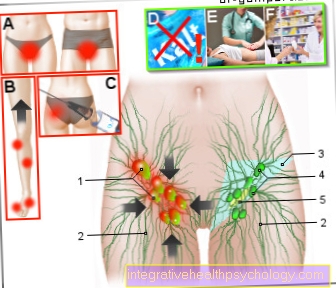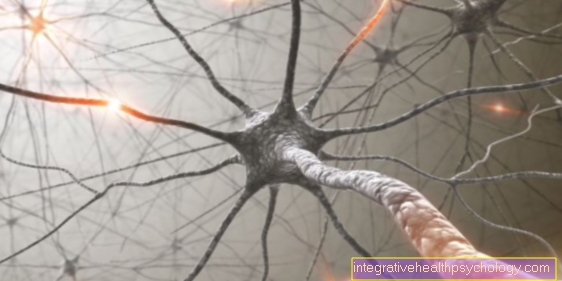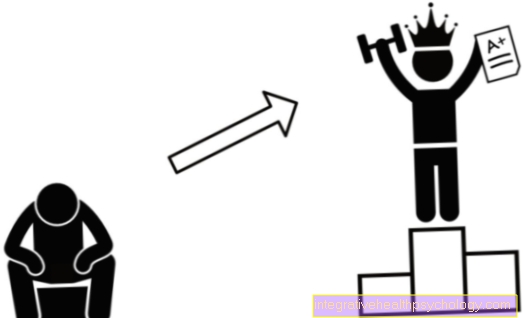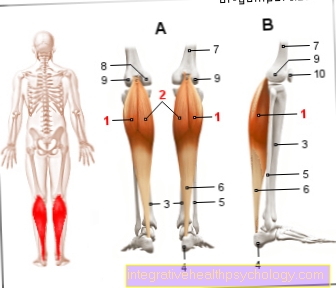Reactive force
definition
The reactive force is defined as the force to achieve the highest possible impulse in the stretching-shortening cycle.
The expansion-shortening cycle describes the phase between eccentric (yielding) and concentric (overcoming) How the muscles work.

Structure of the reactive force
A good reactive strength results from the maximum strength, the reactive tension ability of the muscles and the rapid contraction ability of the muscles.
The reactive tension ability
The reactive tension of the muscles is created by the passive elasticity of the muscles and tendons and the additional neuronal activation.
Stretching shortening cycle:
- Short stretch-shortening cycle (<200ms, partly also <170ms)
- Longer Stretching shortening cycle (> 200ms)
Recruiting and frequencying
Recruiting and frequencying are closely related to the reactive force:
recruitment
Recruitment is understood as the ability to involve as many motor units as possible in a contraction.
in short: how many muscle fibers are innervated during a contraction?
Note: Motor units have different excitation thresholds.
First, slow, weak endurance units are switched on (slow Twitch):
- Slow Twitch (ST) - fibers (low glycogen, high mitochondria, high resistance to fatigue) - also called the red type.
- Fast Twitch (FT) fibers (higher Glycogen content, easily fatigued) also called the white type.
- Fast Twitch oxidative (FTO) fibers (fast fibers with high fatigue resistance, medium glycogen content) also called the intermediate type.
Frequencying
Frequencyization is the ability to innervate the muscles sustainably and at high frequencies. A maximum power output is possible from approx. 55 Hertz (Hz).
How can you measure the reactive force?
To make the reactive force measurable, you need a standardized test. This can be a drop jump, countermovement jump or squat jump. In the countermovement jump, one of the most frequently used tests, the test person has to jump from an elevation to the floor and then perform a straight jump from there. This must be as high as possible. In addition to the jump height, the contact time, jump and landing are also taken into account. If you put the different factors in context, the reactive force capacity can be measured.
Reactive strength training
The training of the Reactive force aims primarily at adjustments to the central nervous system. Training should therefore always take place in a rested state.
Typical exercises to improve reactive strength
Athletes who want to improve their reactive strength should try plyometric training. It is about dynamic movements that make use of the stretch-concentration cycle. One plyometric exercise is the squat-stretch jump. This involves crouching before the stretch jump, which stretches the muscles. An energy potential is charged and this is released during the following stretch jump and converted into kinetic energy. This increases the force impulse during the subsequent stretch jump.
Another exercise is the plyometric push-up, in which the stomach and buttocks are constantly tensed. When lowering, your chest briefly touches the floor. Then the body is explosively pushed upwards. The explosiveness should be as high as possible, and ideally the palms of the hands leave the ground and do a little "hop". The following landing should be stable and the next rep can be done immediately.
Other exercises to strengthen the reactive force are exercises with medicine balls. You can work with sidesteps from left to right and back in front of a wall. At the same time, the medicine ball is bumped with the arms from the chest against a wall one meter away. Variants are, for example, the wallball from the deep squat. The ball is held in front of the chest again, a deep squat is performed, and the medicine ball is then pushed up against the wall in an upward stretching movement. Other exercises are the Russian Twist as a partner or single exercise.
What is the difference to maximum strength?
The maximum force is about generating the greatest possible impulse against a resistance. The reactive force, on the other hand, wants to enable the largest possible force pulse in the time available. This does not always have to end in maximum strength. If there is not enough time, the reactive force can also be lower than the maximum force. In contrast to maximum strength, the time factor is added here.
You can also read a lot more information at: Maximum strength
Summary
In the case of the reactive force, there is initially a short one strain of the muscles in the eccentric (yielded) Phase. The elasticity of the muscles and tendons leads to an independent increase in strength. In the seamless transition (<200ms) into the concentric phase, an additional force pulse is generated.





























